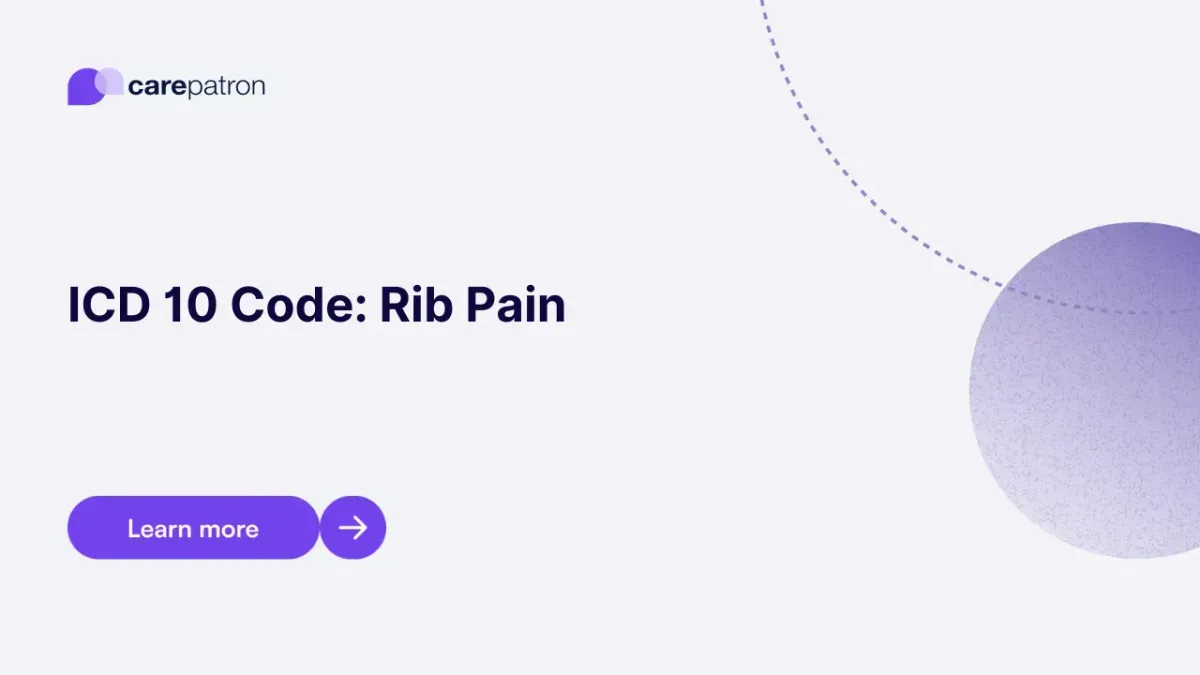
Rib Pain ICD-10-CM Codes
Read this short guide and learn about rib pain ICD codes you can use.
Use Code
Commonly asked questions
No. As we mentioned earlier, it’s best to use ones related to chest pain and specific problems that can cause rib pain.
Healthcare professionals may conduct imaging tests to get to the bottom of what’s causing the rib pain. They might also conduct a bone scan in case a patient has cancer.
That depends on what’s causing it. If the rib pain is mild, over-the-counter pain relievers should do the trick. Compression wraps are also a choice, but the moment it starts making breathing difficult, it should be removed.
If rib pain is tied to an underlying condition, then it should be treated.
EHR and practice management software
Get started for free
*No credit card required
Free
$0/usd
Unlimited clients
Telehealth
1GB of storage
Client portal text
Automated billing and online payments
